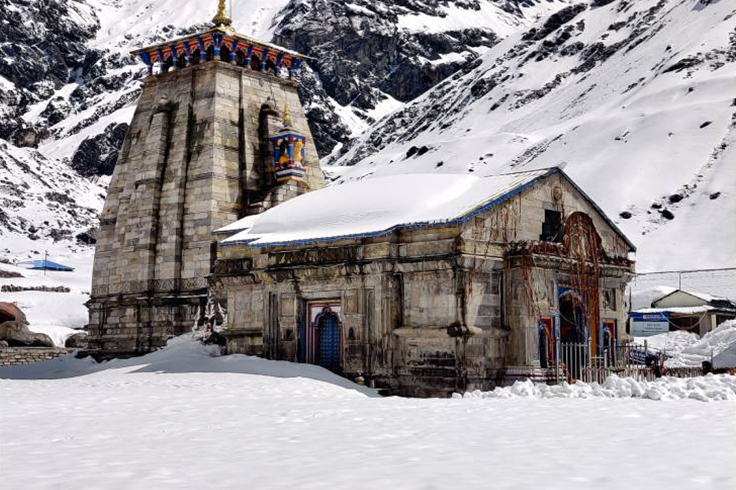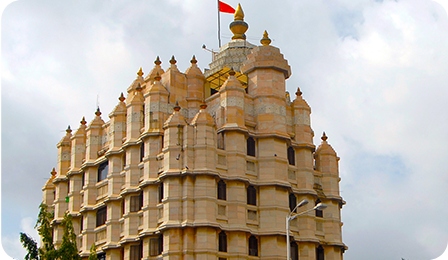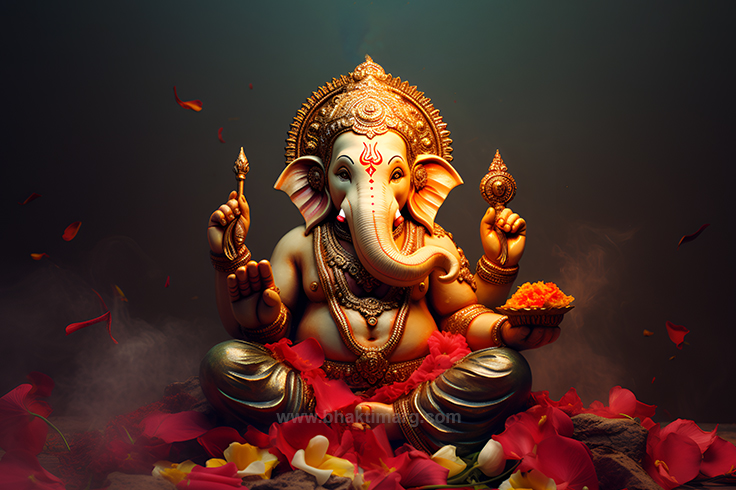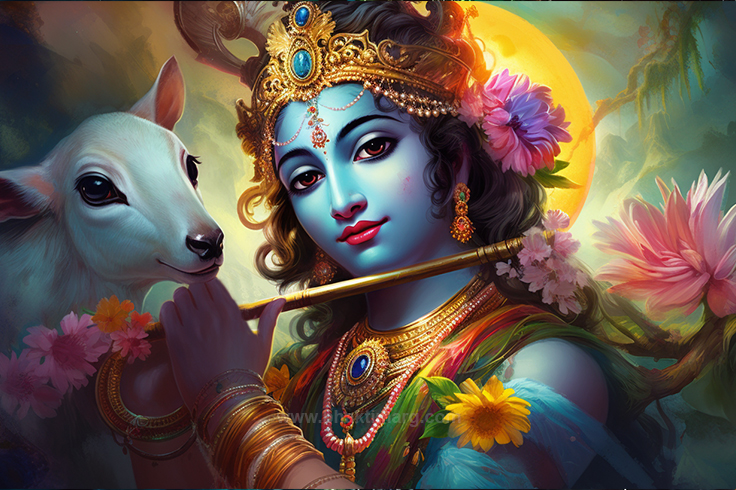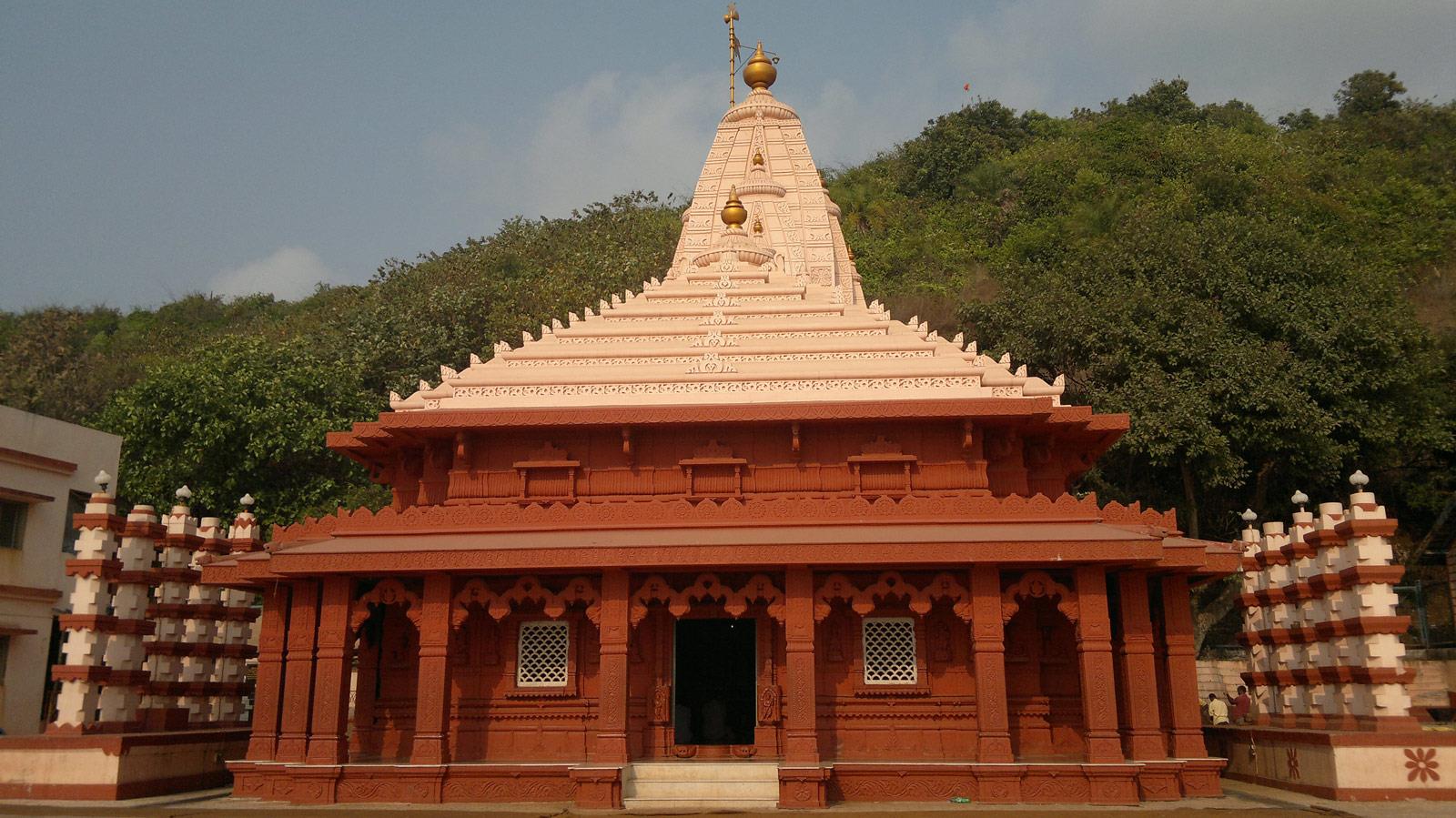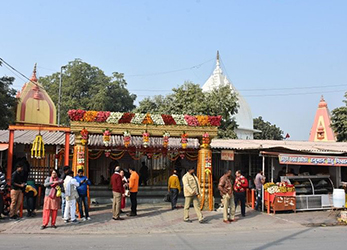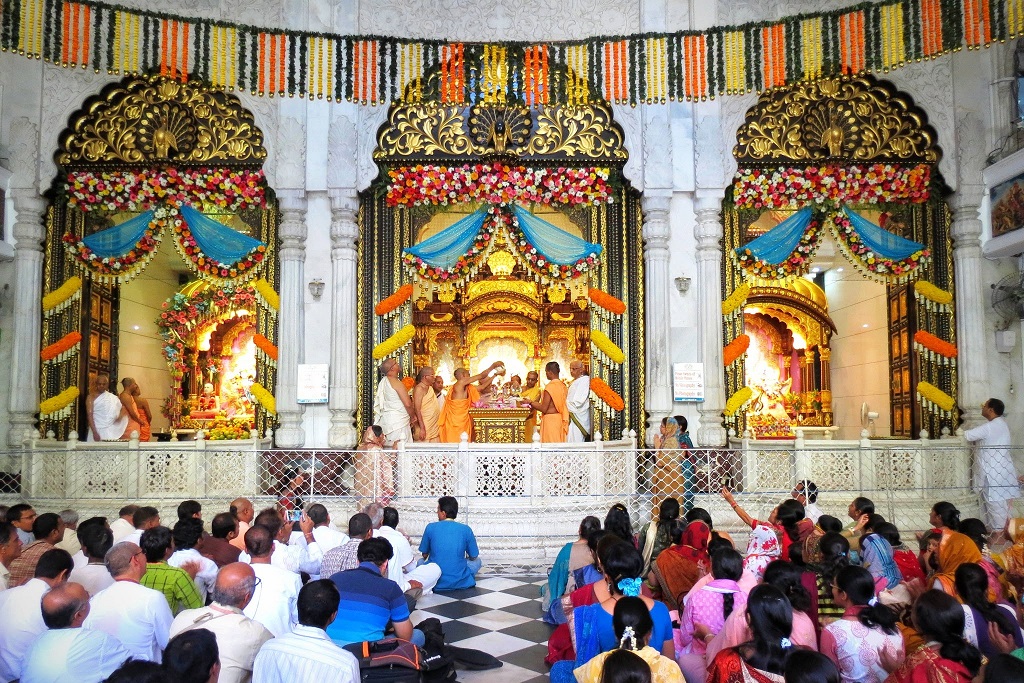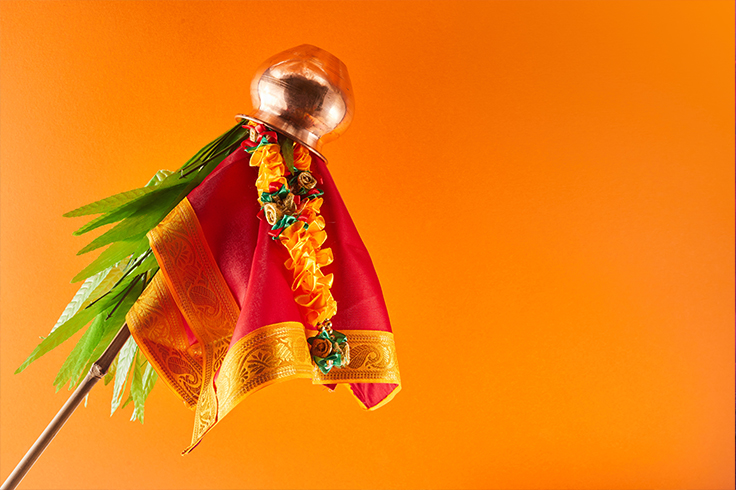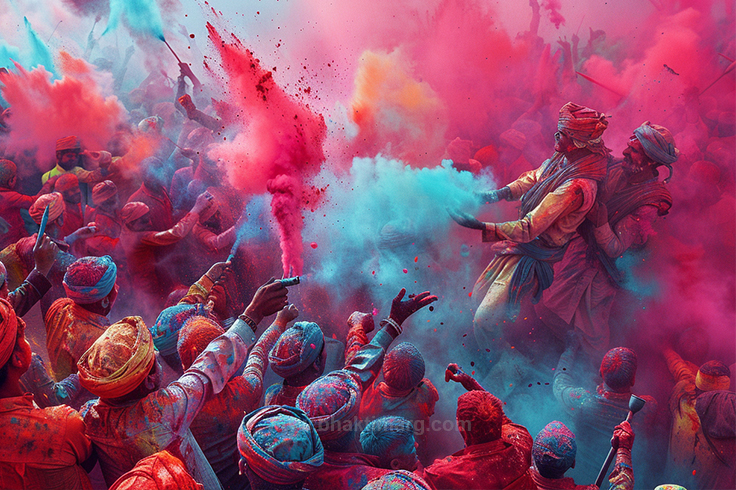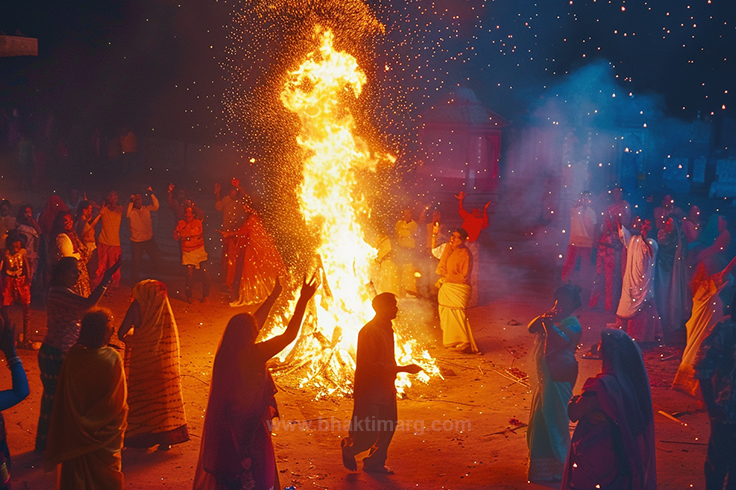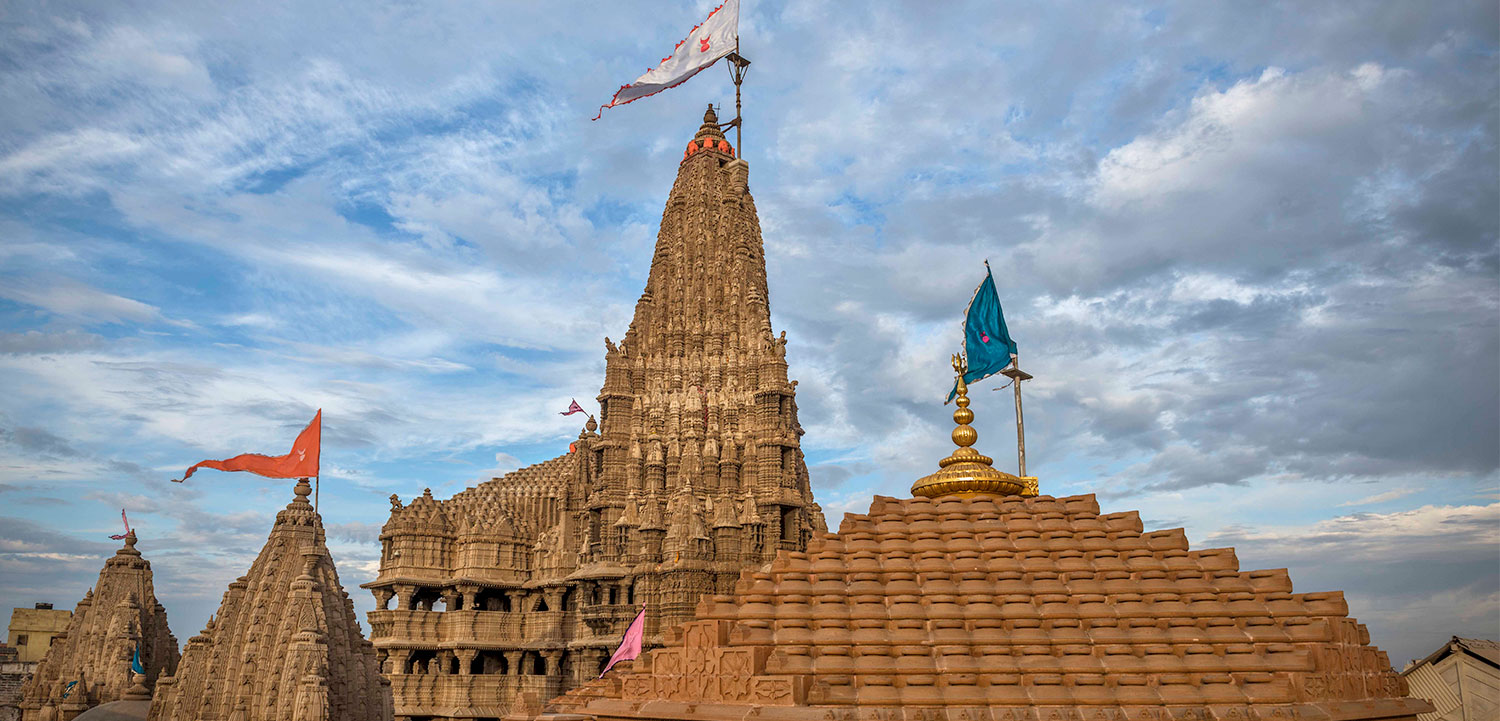
Dwarkadhish Temple, Gujarat
The Shri Dwarkadhish Mandir is the greatest attraction in the legendary city of Dwarka for Hindu pilgrims. The Dwaraka Krishna Mandir, also known as the Dwarkadhish Temple or Jagat Mandir, is a Hindu temple dedicated to Lord Krishna. It is in the holy town of Dwarka in Gujarat, India. The temple holds great significance in Hinduism and is one of the major pilgrimage sites for devotees of Lord Krishna. We at Bhakti Marg aim to make your spiritual journey a fulfilling experience by helping you discover the significance of the holy destinations. The Dwarkadish Temple is at Dwarka, which is a predominant Hindu pilgrimage or Char Dham destination. Dwarka is believed to be the place where Lord Krishna established his kingdom after moving from Mathura. The temple is believed to be located at the spot where Lord Krishna’s original Dwarka city stood. According to Hindu belief, Dwarka was Krishna’s capital, and Lord Krishna the ‘King of Dwarka’.
Lord Krishna is the primary deity of the Dwarka Temple. The temple’s architecture is a significant attraction as well. It features intricate carvings, sculptures, and a multi-story spire, a notable example of Hindu temple architecture. The temple complex also includes other shrines and smaller temples dedicated to various deities. The Shri Dwarkadhish Mandir holds a prominent place in the hearts of devotees and is an essential part of Krishna worship in Hinduism. It is visited by thousands of pilgrims and tourists each year, making it one of the most revered and visited temples in India.
Narrative Behind Dwarkashish Mandir in Gujarat
The famous Dwarkadhish Ji Ka Mandir has a long, illustrious history extending over 2500 years, or so. The archaeological expeditions of the Dwarka Mandir Temple and Dwarka city reveal that the original temple is approximately 2200 years old. The Lord Krishna Dwarka Temple went through destruction, renovation, and rebuilding phases many times over the years. According to archaeologists, the Dwarkadhish Mandir was rebuilt during the Gupta Dynasty around 413 A.D. Archaeologists point out that around the 11th century; the Dwaraka Krishna Temple was plundered and demolished by ruthless Muslim forces. The Shree Dwarkadhish Temple Dwarka was attacked many times from the 11th century to the 15th century. The temple was reconstructed many times during this period. According to archaeological findings, the Dwarka Mandir was reconstructed, extended, and renovated throughout the 16th century. The present Dwarka Temple in Gujarat is a result of the 1730 reconstructions.
The history and origin of the Dwarkadhish Temple are deeply intertwined with Hindu belief and the life of Lord Krishna. The temple is located in the town of Dwarka in the western Indian state of Gujarat. It stands as a significant pilgrimage site for devotees of Lord Krishna and holds a special place in Hindu religious history. According to Hindu texts, Dwarka was the capital city of Lord Krishna’s kingdom. The city was said to be prosperous and well-fortified, situated on the western coast of the Indian subcontinent. It was known for its opulence and divine presence due to Krishna’s residence there. The story of the origin of the Dwaraka Lord Krishna Temple can be traced back to the Dwarka kingdom’s establishment by Lord Krishna after he left Mathura. Krishna moved to Dwarka to escape the chaos and conflicts in Mathura and established Dwarka as his new abode. He is believed to have built the city with the help of Lord Vishwakarma, the divine architect.
If Hindu scriptures are to be believed, Dwarka encountered a host of natural disasters after Krishna departed from Mother Earth. Eventually, Shri Dwarkadhish Mandir was submerged under the waters of the Arabian Sea. This historical event is called the Dwarka Deluge. The Dwarka Temple place was found underwater around the 20th century. The precise date when the Dwarka Dheesh Mandir was built is not known with absolute certainty. We can trace the origin and history of the Dwaraka Temple in Gujarat many centuries back. The famous Krishna temple has been rebuilt and renovated many times because of multiple reasons, such as invasions and natural calamities.
Essence of Dwarkadhish Mandir And Its Architectural Beauty
The architecture of the Dwarkadhish Temple in Dwarka Gujarat is a blend of traditional Hindu temple architecture and regional influences. The chief deity of the temple is Lord Krishna in his form as the King of Dwarka, also known as Dwarkadhish.
The temple Dwarka Dwarkadhish Mandir complex features a towering spire that stands as a prominent feature. The spire is adorned with intricate carvings and sculptures depicting diverse mythological stories and figures. The temple’s main hall and sanctum sanctorum houses the idol of Dwarkadhish, a four-armed depiction of Lord Krishna. The Dwarka Ji Temple in Gujarat is a highly acclaimed pilgrimage destination of the Hindus since it is a monastery or Chardham established by the spiritual Guru Adi Shankaracharya. We at the Bhakti Marg uphold the belief that the Dwarka Dhish Mandir darshan or pilgrimage to this coveted holy destination will result in salvation or Moksha, freedom from the cycle of life and death. The Dwarka Ji Temple remains a central pilgrimage site for devotees of Lord Krishna. It attracts thousands of pilgrims and spiritual tourists every year. Devotees offer prayers, perform rituals, and seek blessings from Lord Krishna.
The Dwarkadhish Temple Dwarka, also known as the Krishna Dwarka Temple or Dwarka Dhish Temple is renowned for its intricate architecture and rich historical significance. The temple’s architecture follows the traditional Hindu temple style prevalent in the region, characterized by its ornate carvings, grand entranceways, and towering spire. Here are the architectural and construction details of the Dwarka Gujarat Mandir:
The Main Temple in the Dwarka complex is organized in a way that allows devotees to move through various chambers and halls while progressing towards the central sanctum where the main deity, Lord Krishna is enshrined. The temple layout consists of multiple courtyards, pillared halls, and shrines dedicated to different deities. The architectural style of the Dwarka Temple Krishna is predominantly Rajasthani and Chalukyan, with influences from various dynasties and periods. The temple showcases intricate stone carvings, detailed sculptures, and decorative motifs that reflect the artistic prowess of the craftsmen of that era.
The Dwaraka Sri Krishna Temple, also known as the old Dwarka Temple, is an architectural marvel showcasing the intricacies of Hindu temple architecture. The temple’s construction details reflect the cultural and artistic richness of the region. The main temple structure is constructed using limestone and sandstone. The Sri Krishna Dwaraka Temple plan follows the typical layout of Hindu temples, with a sanctum sanctorum that houses the main deity, Lord Krishna. Surrounding the sanctum is a path for devotees to walk around while offering their prayers. The Dwarkadhish Dwarka temple is surrounded by a courtyard that provides space for devotees to assemble and engage in religious activities. Pilgrims often circumambulate the temple as part of their worship. Surrounding the main Dwarka Temple, there might be smaller shrines dedicated to other deities. The temple complex typically includes a large hall, and mandapas or pavilion with pillars. These spaces are for congregational activities, religious ceremonies, and places for devotees to gather.
The mandapas also feature artistic carvings that contribute to the overall aesthetic of the temple. One of the most striking features of the Dwarka Ji Mandir is its towering shikhara. The shikhara is a multi-story pyramidal structure that gradually tapers as it rises. It is adorned with intricate carvings, sculptures, and decorative elements. The shikhara is a visual focal point and symbolizes the connection between the earthly and divine realms. The exterior walls are embellished with elaborate carvings and sculptures depicting various episodes from Hindu mythology, including scenes from the life of Lord Krishna. These carvings serve both a decorative and a narrative purpose, helping to convey the stories and teachings associated with the deity.
Location
The Dwarka Main Temple is in Dwarka in Gujarat, India. The temple is positioned near the shore, making it a prominent landmark in the town.
Darshan Timing & Festival
Open Close Timing : |
Generally from 6:30 Morning, Evening Times may Vary (check the website) |
Festivals : |
Janmashtami, Diwali, Holi |
Temple Information
Basic Services : |
Prasad, Darshan, Aarti, Abhishek, Accommodation, Eateries, Social Activities |
Organized By : |
Dwarka Mandir Prabhandak Committee |
Dedicated To : |
Shri Krishna |
Architecture : |
Maaru Gurjara Style, Chalukya Style |
Photography : |
Not allowed |
Entry Fee : |
No |
How To Reach
Address : |
Dwarkadhish Temple Dwarka, Devbhoomi Dwarka, Gujarat 361335 India |
Roads : |
Dwarka is well-connected by road and can be reached by both private and public transportation. Dwarka is well-connected by road and can be reached by both private and public transportation. The distance between Dwarka and major cities in Gujarat:
|
Nearest Railway : |
The nearest railway station is Dwarka Railway Station and Trains like the Dwarka Express and Okha Express connect Dwarka to other parts of Gujarat and India. |
Nearest Airport : |
The nearest airport to Dwarka is Jamnagar Airport (IATA: JGA), which is approximately 145 kilometers (90 miles) away from Dwarka. |
Website : |
https://www.dwarkadhish.org/devasthan-samiti/members-of-the-committee/ |
Social Media : |



